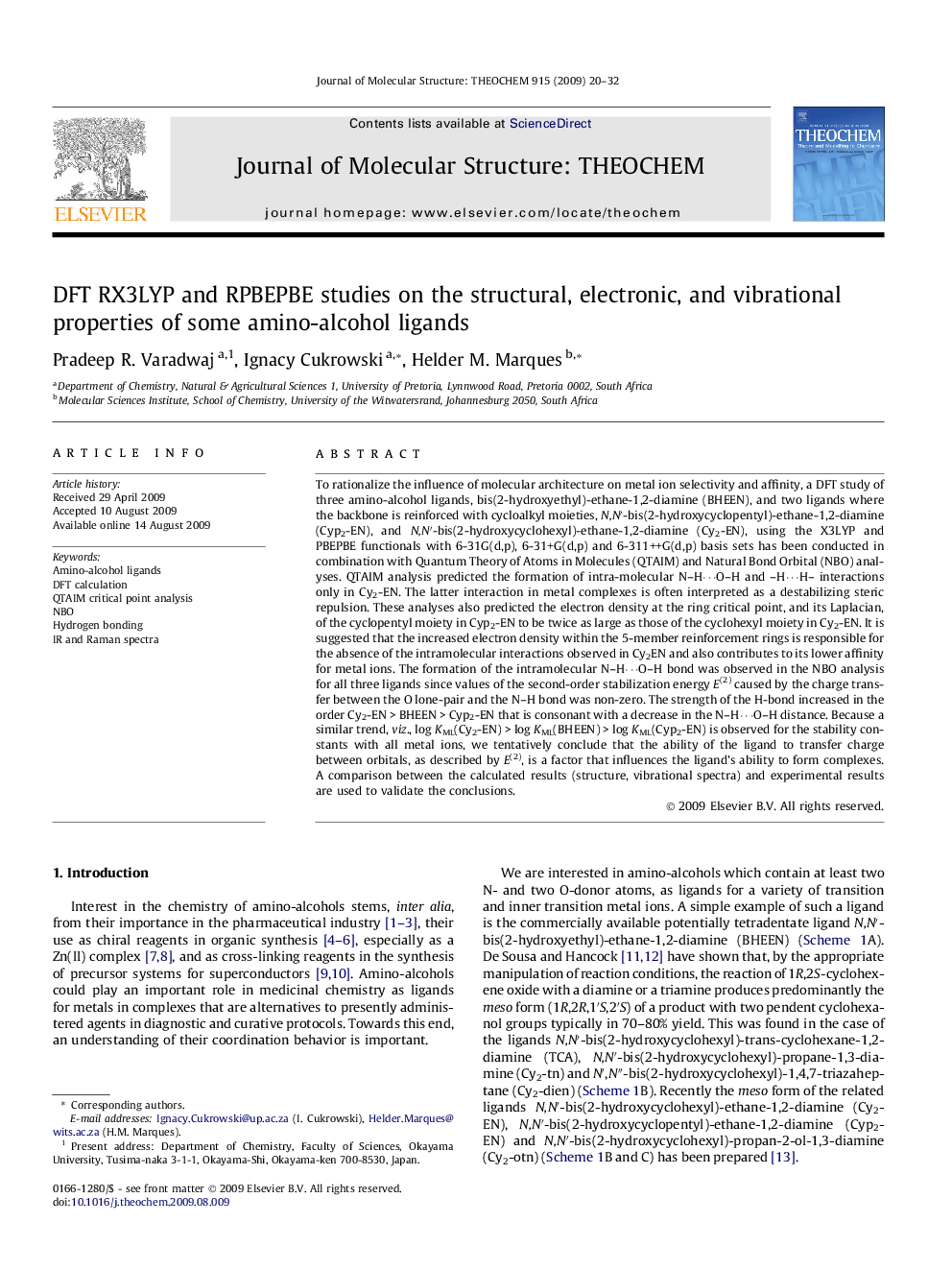| کد مقاله | کد نشریه | سال انتشار | مقاله انگلیسی | نسخه تمام متن |
|---|---|---|---|---|
| 5417138 | 1506908 | 2009 | 13 صفحه PDF | دانلود رایگان |
عنوان انگلیسی مقاله ISI
DFT RX3LYP and RPBEPBE studies on the structural, electronic, and vibrational properties of some amino-alcohol ligands
دانلود مقاله + سفارش ترجمه
دانلود مقاله ISI انگلیسی
رایگان برای ایرانیان
کلمات کلیدی
موضوعات مرتبط
مهندسی و علوم پایه
شیمی
شیمی تئوریک و عملی
پیش نمایش صفحه اول مقاله

چکیده انگلیسی
To rationalize the influence of molecular architecture on metal ion selectivity and affinity, a DFT study of three amino-alcohol ligands, bis(2-hydroxyethyl)-ethane-1,2-diamine (BHEEN), and two ligands where the backbone is reinforced with cycloalkyl moieties, N,Nâ²-bis(2-hydroxycyclopentyl)-ethane-1,2-diamine (Cyp2-EN), and N,Nâ²-bis(2-hydroxycyclohexyl)-ethane-1,2-diamine (Cy2-EN), using the X3LYP and PBEPBE functionals with 6-31G(d,p), 6-31+G(d,p) and 6-311++G(d,p) basis sets has been conducted in combination with Quantum Theory of Atoms in Molecules (QTAIM) and Natural Bond Orbital (NBO) analyses. QTAIM analysis predicted the formation of intra-molecular N-Hâ¯O-H and -Hâ¯H- interactions only in Cy2-EN. The latter interaction in metal complexes is often interpreted as a destabilizing steric repulsion. These analyses also predicted the electron density at the ring critical point, and its Laplacian, of the cyclopentyl moiety in Cyp2-EN to be twice as large as those of the cyclohexyl moiety in Cy2-EN. It is suggested that the increased electron density within the 5-member reinforcement rings is responsible for the absence of the intramolecular interactions observed in Cy2EN and also contributes to its lower affinity for metal ions. The formation of the intramolecular N-Hâ¯O-H bond was observed in the NBO analysis for all three ligands since values of the second-order stabilization energy E(2) caused by the charge transfer between the O lone-pair and the N-H bond was non-zero. The strength of the H-bond increased in the order Cy2-EN > BHEEN > Cyp2-EN that is consonant with a decrease in the N-Hâ¯O-H distance. Because a similar trend, viz., log KML(Cy2-EN) > log KML(BHEEN) > log KML(Cyp2-EN) is observed for the stability constants with all metal ions, we tentatively conclude that the ability of the ligand to transfer charge between orbitals, as described by E(2), is a factor that influences the ligand's ability to form complexes. A comparison between the calculated results (structure, vibrational spectra) and experimental results are used to validate the conclusions.
ناشر
Database: Elsevier - ScienceDirect (ساینس دایرکت)
Journal: Journal of Molecular Structure: THEOCHEM - Volume 915, Issues 1â3, 15 December 2009, Pages 20-32
Journal: Journal of Molecular Structure: THEOCHEM - Volume 915, Issues 1â3, 15 December 2009, Pages 20-32
نویسندگان
Pradeep R. Varadwaj, Ignacy Cukrowski, Helder M. Marques,